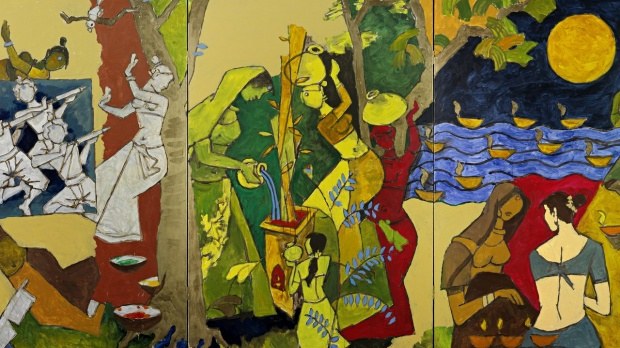
What does it mean to be a woman? Are you born one, or as Simone De Beauvoir writes in The Second Sex, do you become a woman? Who then can become a woman? And how? This March, as we join several women and men around the world to observe Women’s Day on March 8, we explore these difficult questions in this month’s issue of In Plainspeak.
Shikha Aleya writes the Issue in Focus, where she explores these very questions, their implications and their meanings in the 21st century, where misogyny and patriarchy are very much alive, and very much a part of our everyday experiences. And as she walks us through disturbing images and complex conceptions of women’s sexualities, Shikha talks about how ‘troubling’ the very phrase ‘Women’s Sexuality’ can be.
Even as we ponder over these questions, Nivedita Menon looks for answers within the annals of feminism and feminist thinking in her email interview with Shweta Krishnan. In the first part of her interview, published on March 1, she discusses how feminists use law and subversion to challenge patriarchy and to negotiate their agency and freedom. In the second part of her interview, published on March 16, she continues her discussion on feminism, specifically highlighting its meaning and application in the 21st century where gender binaries are strongly questioned.
Women’s sexuality is discussed very often only when women experience something unpleasant or violent. However sexuality is not only about power and violence; it is also about pleasure and desire. But who can love women? Whom can women love? How do they see desire? And how does a desirous gaze see them?
In an email interview with Shweta Krishnan, Ruth Vanita discusses same sex love, the male gaze and the queer gaze. She explores the shelves of literature ranging from Shakespeare to Virginia Woolf to Hindu mythology for gender expressions and gendered experiences, discussing along the way her current research interests in the works of Urdu poets and in exploring ‘leela’ or “eroticism as play”.
Aindrila Chaudhuri’s I Column article provides an excellent segue into the liberating but often hidden world of erotica. Describing her chance discovery of erotic poetry and her own growing interest in the marriage of sexuality and pleasure, Aindrila explores the often ignored spectrum of asexuality. In the Review section, Deepa Ranganathan, writes about the anthologies on erotica published by Tranquebar Press, opening up conversations on how erotica is not “…cheap, trashy and pornographic”, but a genre of literature that like any other form of writing challenges our notions of gender and sexuality.
In Voices, Japleen Pasricha walks us through some funny, some silly and some ridiculous media representations of women to discuss the male gaze, and to question the patriarchal eye of the camera. “In advertising, especially in the beauty industry, a woman is not just an object of the gaze but also the product”, she writes.
Under Voices, we also have a short story submitted by Sami S, which beautifully explores fantasy, power and desire. Juhi Sidharth explores how women become repositories of honour and further deepens the dialogue on patriarchy, as she presents findings from her doctoral thesis on conversations about gender and sexuality between teachers and students in Mumbai schools. This article has been translated for the Hindi section by Dipika Srivastava.
In the Video section, we feature a song from the Hindi film Astitva which walks us through the life of a lonely housewife who chooses to have an affair with her music teacher. In the song, her vivid fantasies mingle with her anxiety and fears as she stands on the threshold between her loneliness and the possibility of sexual pleasure.
In Brushstrokes we feature the works of Amrita Sher-Gil, an eminent Indian artist, whose bold strokes and powerful depictions of women capture textures of desire coming alive through the bodies of women.
The Blog Roll section this time features a post on the issue of virginity by the blogger Indian Home Maker for her personal blog.
We hope you will enjoy reading about the conundrums we unearth as we attempt to understand what it means to be a woman in the 21st century, where we realise the need to move past gender binaries and practice a kind of feminism which in the words of Nivedita Menon serves “to disorder established patterns and to denaturalise what has come to be presented as eternal and unchanging”.
Happy Reading!
The TARSHI Team
Pic Credit: Painting by MF Hussain